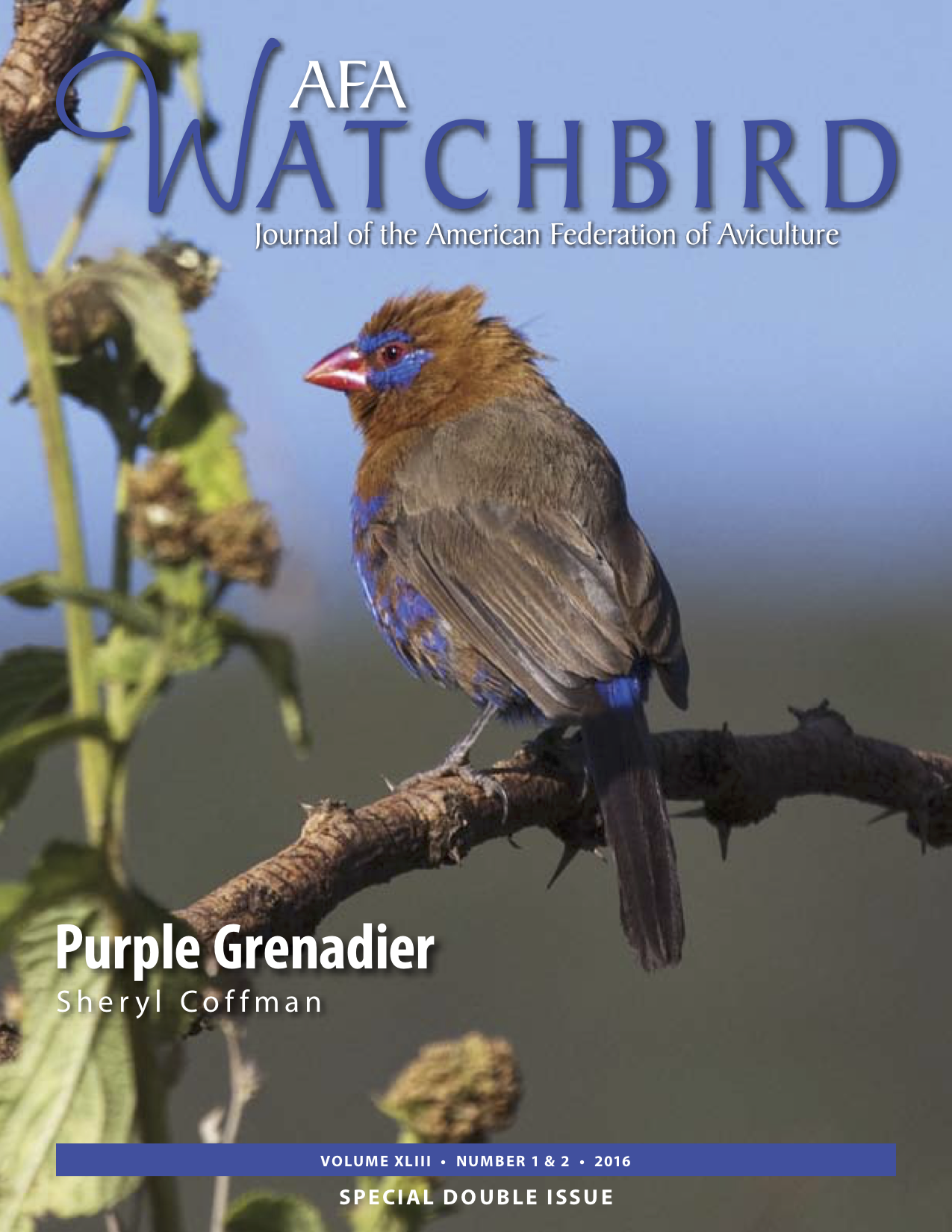Abstract
Captive production of the Puerto Rican Parrot (Amazona vittata) has been instrumental in recovery of the species from only 13 individuals in the wild in 1975 to a total population of approximately 500 in 2015, (20 to 25 in the wild population in El Yunque National Forest, approximately 100 in the wild population in Rio Abajo State Forest, and over 415 in the captive breeding facilities of the Luquillo/Iguaca and Rio Abajo aviaries). The Puerto Rican Parrot has become an iconic and high-profile conservation species. The cornerstone of the recovery plan for this critically endangered species is an active captive breeding program, management of the wild population, and long-term reintroduction program. The two aviary populations in Puerto Rico (Iguaca, formerly known as Luquillo, and Río Abajo) were this health and reproductive assessment of a sub-set of the species took place, are the only source of parrots for release.
Reproductive assessment is a tool used to enhance reproductive potential and produce productive pairings. In 2002 a number of adult birds, which had not produced viable offspring were selected for reproductive assessment, in an attempt to augment the population growth and provide ample individuals for re-introduction. Normal productive individuals were not examined. This assessment included thorough physical exam, endoscopic evaluation, hematology and blood chemistry profiling, viral screening and hormonal assessments.
Key words: Amazona vittata, Puerto Rican Parrot, psittacine
References
Snyder, N.F.R, Wiley, J.W., and Kepler, C.B., The Parrots of Luquillo: Natural history and Conservation of the Puerto Rican Parrot, Western Foundation of Vertebrate Zoology, 1987.
U.S. Fish and Wildlife Service. 1982. Puerto Rican Parrot Recovery Plan. U. S. Fish and Wildlife Service, Atlanta, Georgia.
U.S. Fish and Wildlife Service. 1999. Technical/Agency Draft Revised Recovery Plan for the Puerto Rican Parrot (Amazona vitatta). Atlanta, Georgia.
U.S. Fish and Wildlife Service. 2009. Recovery Plan for the Puerto Rican Parrot (Amazona vitatta). Atlanta, Georgia.
Joyner, K.L., Theriogenology, In Ritchie, BW, Harrison, GH and Harrison, LR, Avian Medicine: Principles and Application, Wingers Publishing, Lake Worth Florida, pp 749-804., 1994.
Clubb, S.L., Reproductive Management of Parrots, Proc Western Vet Conf, Las Vegas, NV, 2009.
Clubb, S.L., and K. Clubb, Reproductive Life Span of Macaws, Psittacine Aviculture, Perspectives, Techniques and Research., Avicultural Breeding and Research Center, Loxahatchee, FL, Chapter 25, 1991.
Johnson, A.L., Reproduction in the male, In Avian Physiology, Forth Edition, Sturkie, PD, ed., Springer Verlag, New York, pp 432-451, 1976.
Johnson, A.L., Reproduction in the female, In Sturkie’s Avian Physiology, Fifth Edition, G. Causey Whittlow ed., Academic Press, New York pp 569-591, 2000.
Divers, S., Avian Reproductive Medicine and Surgery, Proc of AAZV An Conf., 2009.
Clubb, SL, Michael Garner and Carolyn Cray, Detection of Inflammatory Skin Disease in Psittacine Birds using Paired Skin Biopsies, Proceedings of Association of Avian Veterinarians, Monterey CA., pp 193-200, 2002.
Clubb, S.L., Julia Zaias, Carolyn Cray, Leonard Berube and Lorenza Crosta, Endoscopic Testicular
Biopsies For Evaluation of Fertility
in Psittacine Birds., Proceedings of
Association of Avian Veterinarians, Monterey CA pp 133-138, 2002.
Van Tienhoven, Ari, Reproductive Physiology of Vertebrates, Second edition, Cornell University Press, 1983.
Fudge, A.M., Avian Liver and Gastrointestinal Testing, In Laboratory Medicine, Avian and Exotic Pets, AM Fudge, ed., WB Saunders Company, Philadelphia, PA, 2000.
Ritchie, B W: Avian Viruses, Function and Control, Wingers Publishing, Inc., Lake Worth, FL, 1995.
Wiley, Jim, Sex and Age Structure of Puerto Rican Parrots at the Luquillo Aviary and a Recommended Management Strategy –1987-1991. (1987)
Velez-Valentin, J., MS, MAR, Rivera, A, DVM, Joyner, L, DVM, Saving the Critically Endangered Puerto Rican Amazon (Amazona vittata) through the Successful Integration of Conservation, Aviculture, Wild and Captive Bird Research, Proc of Assoc Avian Vets, 2012, Louisville, KY.
Kleiman, D. G. 1989. Reintroduction programs. Pages 297-314 in Wild mammals in captivity: principles and techniques. D. Kleiman, M. Allen, K. Thompson, and S. Lumpkin, editors. Chicago: University of Chicago Press.
Seddon, P. J., D. P. Armstrong, and R. F. Maloney. 2007. Developing the science of reintroduction biology. Conservation Biology 21: 303-312.
Wilson, M. H., C. B. Kepler, N.F. R Snyder, S. R Derrickson, F. J. Dein, J. W. Wiley, J. M. Wunderle, A. E. Lugo, D. L. Graham, W. D. Toone. 1994. Puerto Rican parrots and potential limitations of the metapopulation approach to species conservation. Conservation biology 8: 114-123.
Snyder, N. F. R., S.R. Derrickson, S.R. Beissinger, J. W. Wiley, T. B. Smith, W. D. Toone, and B. Miller. 1996. Limitations of captive breeding in endangered species recovery. Conservation Biology 10:338-348.
Griffith, B., J. M. Scott, J. W. Carpenter, and C. Reed. 1989. Translocation as a species conservation tool: Status and strategy. Science 245: 477-480.
White, T. H. Jr., N. J. Collar, R. J. Moorhouse, V. Sanz, E. D. Stolen, and D. J. Brightsmith. 2012. Psittacine reintroductions: common denominators of success. Biological Conservation148: 106-115.
Earnhardt, J, J. Vélez‐Valentín, R. Valentin de La Rosa, S. Long, C. Lynch, and K. Schowe. The Puerto Rican Parrot Reintroduction Program: Sustainable Management of the Aviary Population. Zoo Biology 9999: 1–10 (2014).
Vélez J. 2013. Puerto Rican Amazon Update. Watchbird, J. of the American Federation of Aviculture. Vol. XL (Num. 4) Pp. 41.

